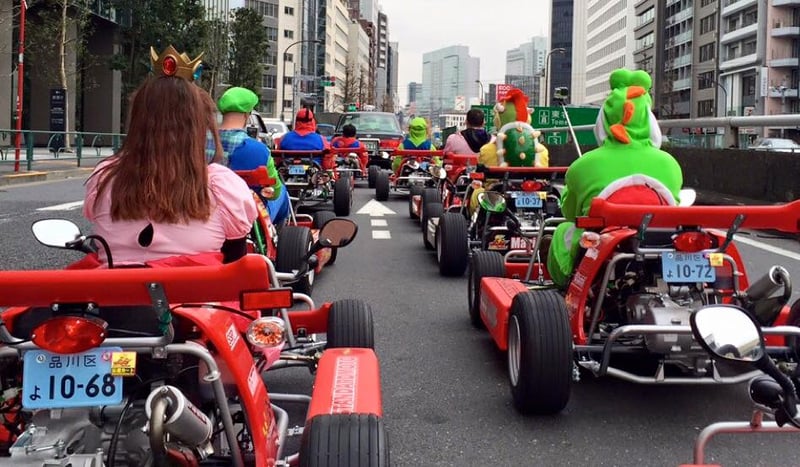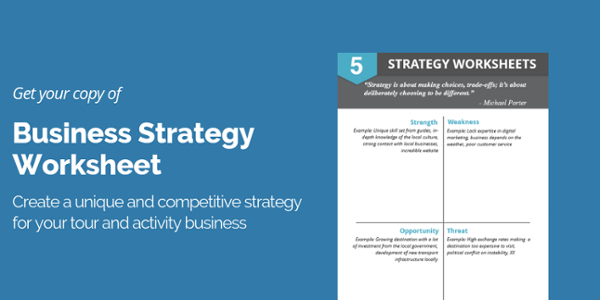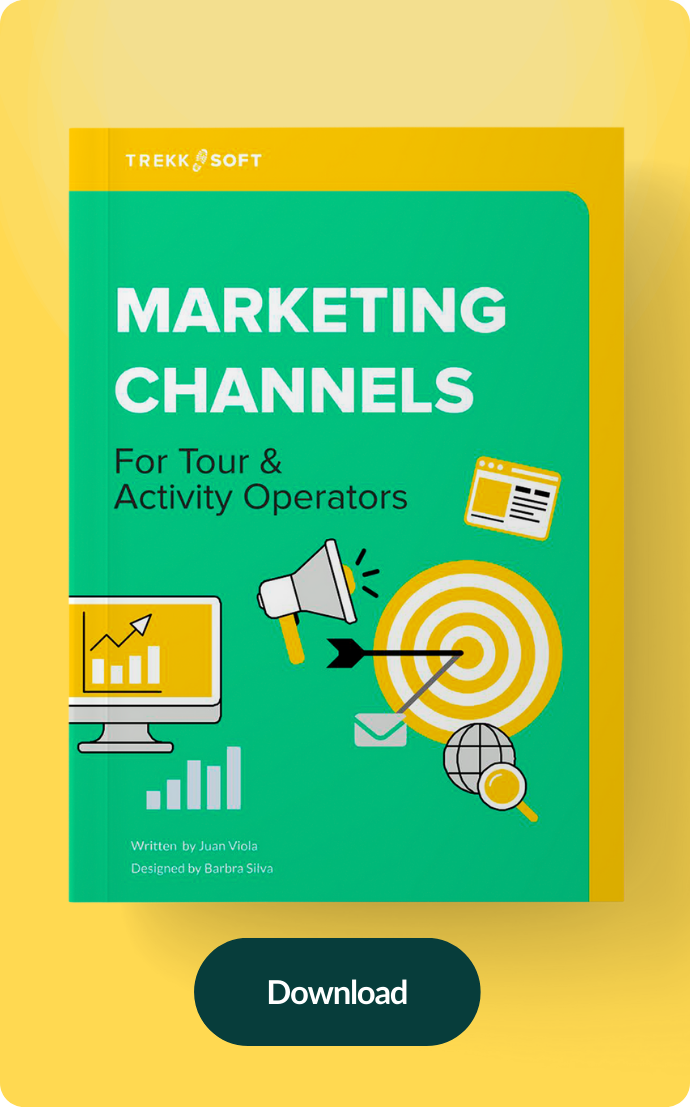With the high season just around the corner, it may seem like the right time to stop promotion and rely on the influx of impending tourism. In reality, it is more vital than ever to make your tours and activities stand out from the competition to achieve the best possible results.
Phocuswright’s travel research states 'the tours and activities market is estimated to reach $183 Billion by 2020.' This figure is led by higher tourism and more competitors in the marketplace.
Another Phocuswright study of the U.S. Consumer confirmed that '80% of U.S. travelers participated in some type of tour, activity, event or ticketed attraction of their last trip.' That’s a big statistic if you consider that out of every 5 travelers, 4 are potential customers for your business.
Here are 5 examples from real companies of how to make your company stand out:

Image from Tokyo Weekend on a MariCar Tour
1. Be unique
More and more, the term tours and activities is being replaced with ‘experiences’.
Experience noun, plural noun: experiences
an event or occurrence which leaves an impression on someone.
An experience is different from a tour. It's distinctive and memorable. It is often something that you couldn’t do elsewhere and leaves a lasting impression on the attendee.
An example of an ‘experience’ is from MariCar who go beyond a city bus or walking tour, by offering something completely unique. A Mario Kart inspired go-kart tour around Tokyo’s city centre.
On arrival to MariCar, customers select their racing attire from a broad selection of costumes. The themed guided tour around the city will begin by avoiding planned obstacles, overtaking fellow riders, racing to the finish line and occasionally screeching to a halt - just like Mario Kart. Surprisingly, there are many businesses in the area attempting to replicate this model.
According to the staff at MariCar, they stand out from the competition due to their “Hi-Spec” karts and the range of costumes. Their tour has generated a buzz online as customers have a unique opportunity to take photographs, record videos and to share the tour through their social media. MariCar says they get many repeat visitors, proclaiming “once is never enough.”
2. Keep it simple
What are the difficulties or time-consuming tasks that your customers tend to experience? An easy way to find out is by reading both your own and your competitors reviews to spot common themes, recurring issues and plan how you simplify and improve the process.
An example would be a customer wrote about a competitor, ‘when booking I had to wait until the next morning to confirm that there was availability for the tour.’ Your solution to avoid this could be to have live availability on your website, SMS or email confirmation to communicate changes or for bookings to confirm automatically once a minimum number of guests have booked. This will keep the process simple for the customer and be less time-consuming for your staff.
Another example would be if you regularly receive feedback saying ‘I brought my camera and was told on arrival that this was not permitted.’ To avoid any confusion, add this information to the tour description, information pack and booking confirmation. Outdoor Interlaken have this information within a FAQ (Frequently Asked Questions) section on their website with a useful explanation. It says that 'for safety reasons, cameras aren't prohibited on certain activities, but you can of course bring a camera for the scenic drive before and after the trip.' They also kit their guides out with a camera to take any photos customers wish.
By pre-empting problems and putting steps in place to solve it, customers will know what to expect prior to arrival and you'll avoid any frustrations on the day of the trip.

3. Share your knowledge and your passion!
Every tour is an opportunity to share information, and your tour guide should be passionate about what they do. Share that passion! Whether your customers are new to the area or live locally they will be interested in hearing from a knowledgeable source about the history, equipment, wildlife, their guide… The topic list is endless.
I myself recently did the Black Labyrinth Cave Tubing Tour in New Zealand. My group were told as we entered the cave to avoid touching the stalactites and stalagmites with our hands. Why? To protect the cave. We heard how just the oil from our hands could damage growth. This is something we would never have known.
Later, our group were informed of the unique history of the caves. It included information on the family who owned the land, trials they faced from the local council, closure due to damages in the cave and their efforts to protect this natural wonder.
We left with a true experience having enjoyed a unique activity from a knowledgeable guide. Subsequently, we all became advocates of the tour sharing our experience with others.
Read: 10 steps to mastering the art of storytelling
4. Have a cause
If you do something that gives back to your community, a charity or to your staff, then share this with your customers. If you are seeking an opportunity to give back, consider something that aligns with your offering.
For example, a zip-line operator might plant greenery in the forest for each participant who joined a tour, or a percentage of each water sports booking may go towards a summer kayak camp hosted for local school children. It could even be that each year a team member completes a marathon in support of a charity.
Unseen Tours offer knowledgeable tours inside hidden buildings across London. This is already a unique experience, but as a social enterprise company, all of their guides are either homeless or vulnerably housed individuals. These creative guides enjoy sharing knowledge. As such, Unseen Tours offer paid work, a platform to utilise their talent and a reason for others to book these tours.
Sharing that your company has a cause or ‘gives back’ may be a reason why a customer will purchase your tour instead of a competitor. Plus, it shows the ethos of the company, can create feel-good press and build a positive reputation within your community.

5. Provide a reason to return
Sometimes with tours and activities, we believe that customers are only going to visit once, which isn’t actually true. A traveller may wish to return again. They may live locally. Your tour could be recommended to others. But you need to provide a reason to do so.
After a customer completes a paragliding experience with Zero Gravity, they receive an email that says 'You were brilliant at paragliding … How about skydiving next?.' They use their database to up-sell to another tour. You could include a discount code to return or a reward if they bring a friend.
Look for opportunities to incentivize customers to return and let them know what they could do as their next adventure. This also works for customers that you haven't heard from in a while. Remind them of the time they completed an activity, update them on any new tours, and entice them to book again.
Throughout the customer journey, you have many opportunities to be memorable.
Be different, be bold, and showcase your brand to stand out from the crowd!




